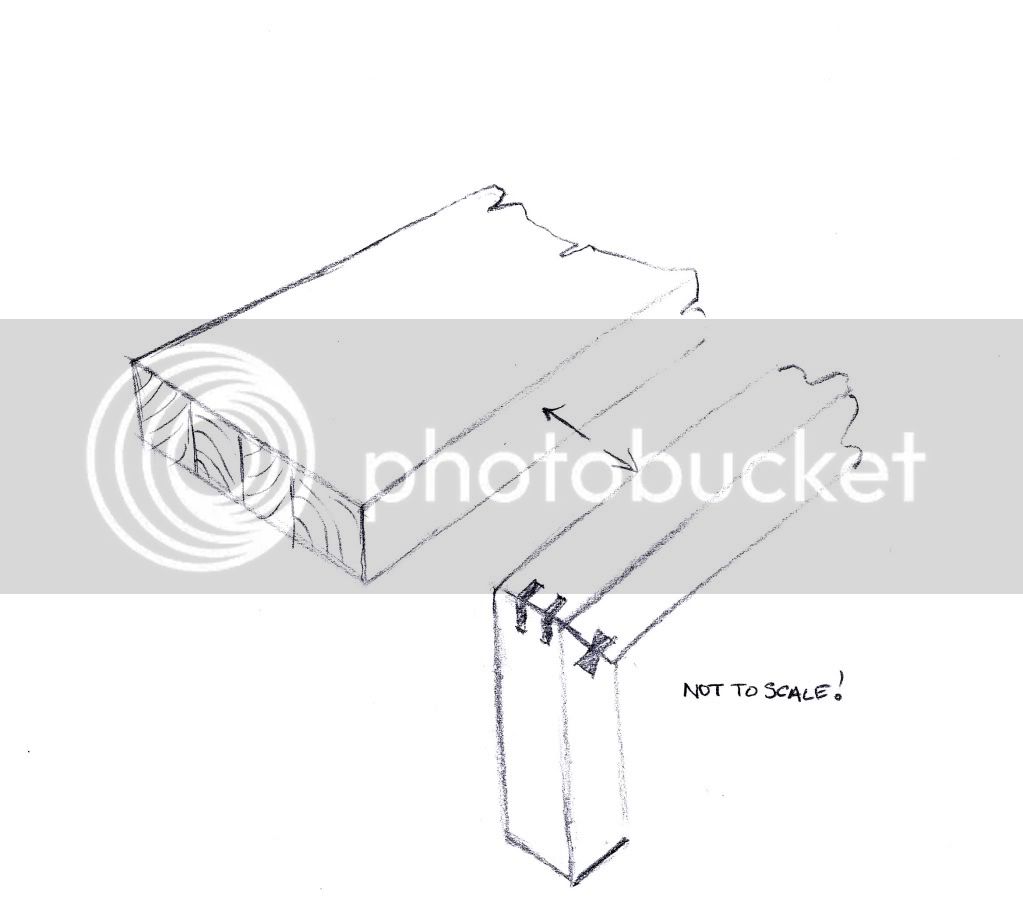Morning all. SWMBO has commissioned her next piece of furniture so I'm back again for some
advice/tips on re-creating this nested set of tables.
http://furnitureulike.co.uk/index.php?t ... t_id=32202
She wants them to have that "chunky look" and from the pics i'm guessing they're about 3" thick.
The dims i'm going to use for the outer table are about 36" x 15" x 3" x 18" (L x W x T x H)
with only two tables underneath. Given these dims that's just under 3.5cuft
The plan is to use Ash (cheap to fix mistakes!) with some kind of dark stain finish similar to
the pics.
It looked easy when i first saw it but then i sat down to plan how i was going to do it and i
just can't decide on how to actually make them !
I could just joint and laminate loads of Ash, cut the mitres and biscuit/spline the bits
together. This seems relatively easy (might regret saying that) to do but but would require the
full 3.5cuft of Ash...plus wastage, Which is an awful lot and i'm guessing they're going to be
heavy.
The other idea i have is to create 3 or 4 "U" shaped pieces with half-lap joints from ply/mdf to
act as a frame, around which i attach the sides/fronts/backs/tops/etc
The sides/fronts/backs/tops/etc will be made from jointing the ash and could be only 1/2" thick,
saving a lot of timber. However, all those mitres scares me silly !
I just can't on how to proceed.
Any ideas/tips/advice would be gratefully appreciated.
furyJohn
advice/tips on re-creating this nested set of tables.
http://furnitureulike.co.uk/index.php?t ... t_id=32202
She wants them to have that "chunky look" and from the pics i'm guessing they're about 3" thick.
The dims i'm going to use for the outer table are about 36" x 15" x 3" x 18" (L x W x T x H)
with only two tables underneath. Given these dims that's just under 3.5cuft
The plan is to use Ash (cheap to fix mistakes!) with some kind of dark stain finish similar to
the pics.
It looked easy when i first saw it but then i sat down to plan how i was going to do it and i
just can't decide on how to actually make them !
I could just joint and laminate loads of Ash, cut the mitres and biscuit/spline the bits
together. This seems relatively easy (might regret saying that) to do but but would require the
full 3.5cuft of Ash...plus wastage, Which is an awful lot and i'm guessing they're going to be
heavy.
The other idea i have is to create 3 or 4 "U" shaped pieces with half-lap joints from ply/mdf to
act as a frame, around which i attach the sides/fronts/backs/tops/etc
The sides/fronts/backs/tops/etc will be made from jointing the ash and could be only 1/2" thick,
saving a lot of timber. However, all those mitres scares me silly !
I just can't on how to proceed.
Any ideas/tips/advice would be gratefully appreciated.
furyJohn





